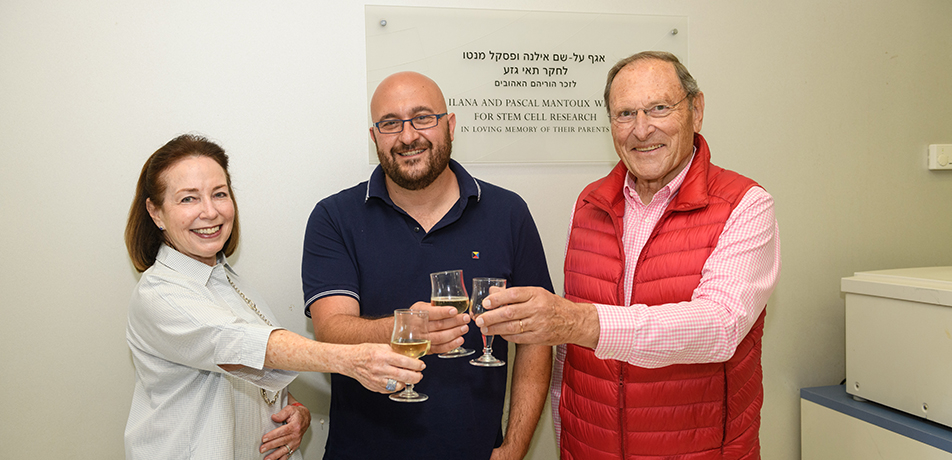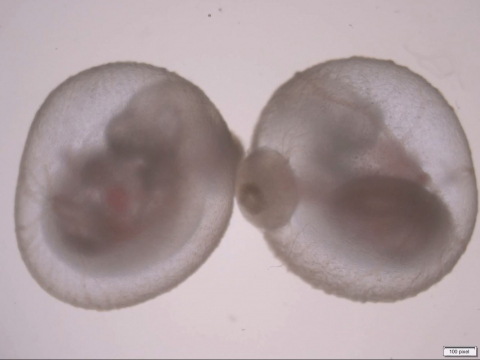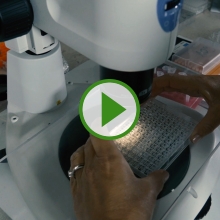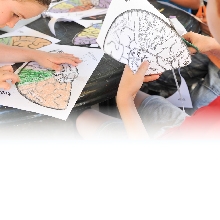Artificial ‘wombs’ incubate stem cell breakthrough
Briefs

Ilana and Pascal Mantoux with Prof. Jacob Hanna (center), raising a toast to a decade since the establishment of Hanna’s lab in the Mantouxs’ name.
The miracle of life in all its diversity is bound up in the first stages of embryonic development, in which a tiny ball of replicating stem cells begins to form specific tissues like the nervous system, heart, stomach, and limbs. In mammals, this has always taken place within the biological uterus.
Now, for the first time, early-stage mouse embryos of around 250 cells, placed in an artificial “womb” designed by Weizmann Institute scientists, have successfully been grown into mouse fetuses with fully formed organs. This breakthrough, achieved in the laboratory of Prof. Jacob Hanna of the Department of Molecular Genetics, was recently reported in Nature.

A mouse embryo growing outside the womb, from the Hanna lab
The new system addresses a significant problem in developmental biology: the fact that, because of the difficulty of imaging or transplanting inside the uterus, much of what we know about embryonic development is derived from non-mammals like frogs or fish, or is inferred from static images of mouse embryos.
In the new approach, developed over seven years, mouse embryos are removed from the mother at day five of development, and transferred to a specially designed incubator where they float in liquid that approximates the nourishing environment of the biological uterus. Using this method, Prof. Hanna and his team have grown fetuses that survive until day 11, by which time the embryo has grown tenfold, and has blood, a beating heart, and a fully developed brain.
“We have grown hundreds of mice in this way, and I’m still captivated every time I see it,” Prof. Hanna says. “Not only does this give researchers an unprecedented tool for studying genes that drive normal mammalian development, it may also provide insight into birth and developmental defects, or problems related to embryo implantation. This could contribute to new strategies for improved medical treatments.” The New York Times reported on the breakthrough in March.








